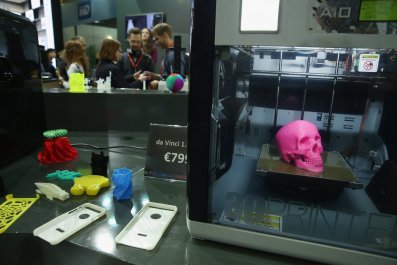We know a bit about the human stomach. We know, for example, that it's lined with an elaborate web of neurons—five times more nerve cells than the spinal cord—that send information directly to our brain, and that it can also command our gastrointestinal system without talking to our brain. This "enteric nervous system" is so elaborate and functionally independent that scientists have dubbed it the "second brain."
But there's a lot about our second brain we don't know, like what it looks like when all those neurons are firing. That means we are largely unaware of how it reacts to various pharmaceuticals, or what goes wrong when someone has a gastrointestinal disease like irritable bowel syndrome.
But that may be about to change thanks to Duke University researchers who devised a way to peer into the enteric nervous system. They surgically implanted tiny, transparent pieces of durable glass into the abdomens of mice, genetically altered so that their neurons glowed green while firing. They also installed teensy 3-D printed pieces of titanium to hold the mice's intestines in place, so the neuron activity would be easier to watch while the mice went about the relatively noisy and chaotic process of digesting food.
The rigs were a success; a paper published in the online journal Nature Communications describes how the team was able to watch the glowing green neurons firing. They were also able to collect the electrical signals emitted from the neurons, by laying a transparent graphene sensor, which picks up electrochemical impulses, over the glass window. Xiling Shen, an associate professor of biomedical engineering at Duke University and author on the study, said in a statement she hopes the stomach-window hack will unlock secrets of the "dark" enteric nervous system. And that, in turn, could finally mean answers to the medical mysteries behind a wide-ranging class of diseases known as "functional gastrointestinal disorders."
These disorders, such as irritable bowel syndrome, constipation and incontinence, affect upwards of 25 percent of the population and yet are often dismissed as "mental problems," according to Gina Sam, the director of the Gastrointestinal Motility Center at Mount Sinai Hospital in New York. These patients are often dismissed because doctors can't find anything anatomically wrong. But that's because the enteric nervous system is invisible to physicians—there has been "no way at all to measure it," Sam says, so few doctors are even aware of the second brain as a possible cause of their patients' distress. The stomach-window invention, she says, could change all that. "I think this is going to revolutionize the way that we test or think about these disorders. I want to get my hands on this. We need human data."




















